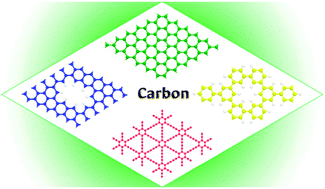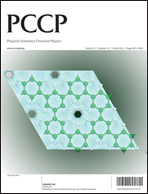Molecular modelling has become a useful and widely applied tool to investigate separation and diffusion behavior of gas molecules through nano-porous low dimensional carbon materials, including quasi-1D carbon nanotubes and 2D graphene-like carbon allotropes. These simulations provide detailed, molecular level information about the carbon framework structure as well as dynamics and mechanistic insights, i.e. size sieving, quantum sieving, and chemical affinity sieving. In this perspective, we revisit recent advances in this field and summarize separation mechanisms for multicomponent systems from kinetic and equilibrium molecular simulations, elucidating also anomalous diffusion effects induced by the confining pore structure and outlining perspectives for future directions in this field.
You have access to this article
 Please wait while we load your content...
Something went wrong. Try again?
Please wait while we load your content...
Something went wrong. Try again?


 Please wait while we load your content...
Please wait while we load your content...